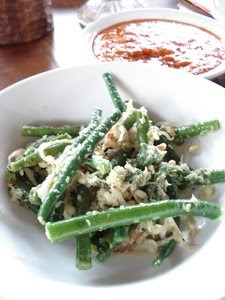With just 22 days left in the year, I can't help but think back to where Street View was at the beginning of 2008. At that time, we had imagery for 23 cities in the United States, and we had
just released embeddable panoramas. Although Street View was still in its infancy, we were excited about the user feedback we had gotten and the creative uses we were seeing.
So we started 2008 with a clear, simple goal: bring Street View to more people in more places. Every time we add imagery for a new city or town, we're not just benefiting its citizens, who now can preview their driving route or check for parking meters outside their dentist's office, but anyone traveling to that place or teaching about it or simply curious to see more of the world.
Looking back over the past 12 months, I think it's safe to say that we've had quite a year. We kept up a pretty steady pace adding new U.S. cities, from the
beaches of Florida to the
snowy peaks in Alaska — and many spots in between. In March, we brought you the
first national park in Street View and have since added nearly a dozen others. We've even come across some pretty quirky sights along the way, like a
giant rocking chair.
Sounds like a pretty big year, right? Well, of course, that's not all. Today marks our biggest launch of Street View imagery to date: we're doubling our coverage in the United States. Several states — Maine, West Virginia, North Dakota, and South Dakota — will be getting the Street View treatment for the first time. We've also added imagery for Memphis, Charleston (SC), and Birmingham, and we've filled in lots of gaps across the country.

(before)

(after)
Since there are spectacular things to see all around the world, Street View also headed overseas this year. In July, Street View made its international debut with
imagery of the Tour de France route, and kept rolling from there. After starting the year with just one country, we now have seven — France, Japan, Australia, Spain, Italy, New Zealand, and the U.S. — letting you see some of the world's most famous attractions and landmarks, ranging from the
Eiffel Tower to
Shibuya, Tokyo to the
Pantheon.
View Larger MapThis year wasn't only about adding new cities, but also about making Street View more useful and more accessible. In March, Street View imagery was
added to the Google Maps API. This has led to an amazing array of uses, ranging from
simplifying the real estate search to
creating adventure games to
showing bike paths. We also integrated Street View into our own driving directions, making it easier for you to explore the real world when you finish your virtual sightseeing. And just two weeks ago, we unveiled a
substantial overhaul to the Street View experience, making it much easier to access and explore imagery (and hopefully a little more fun, too).
We've also brought Street View to more platforms —
first to Google Earth, allowing you to view ground-level imagery alongside all the rich Google Earth content, and in the past few months, to a
wide range of mobile devices so that the imagery is close at hand while you're out on the streets.
One of our other updates this year was developing technology that blurs identifiable faces and license plates. But if you happen to come across something in Street View that you find objectionable, simply click "Report a concern" at the bottom of the image.
Between today's launch and all the other launches this year, 2008 saw a 22-fold increase in the amount of Street View imagery available around the world.
On the
Lat Long blog, you'll find a collection of impressive images from today's launch. And keep Street View in mind during the holiday season. Whether you're looking for a good hill to sled on, want to preview hotels for a ski trip, or need some visual cues for your directions to a holiday party, Street View can help!
Posted by Stephen Chau, Product Manager





































